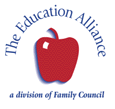Smoky Mountain Learning Adventures
Published with Permission
Written by Analisa L. Smith
www.abledlearning.com
www.TOSMagazine.com
As a young child, I spent more time in the mountains when away from home than perhaps any other place. As an adult, the mountains are our home away from home. The mountains have offered us ethereal beauty and educational opportunities that abound for our homeschooling efforts. Following are some of the activities and locations that our family has enjoyed in the Smoky Mountains and used in our homeschooling adventures.
Nature Viewing and Photo Tours
The Great Smoky Mountains is famous for its spectacular display of fall foliage, with its deep colors of yellow, orange, burnt brown, and crimson. Take in the view from October until mid November while enjoying outdoor activities such as hiking, canoeing, rafting, horseback riding, or scenic car rides. Be on the lookout for trees such as birch, maple, cherry, hobblebush, beech, and lush evergreens. These are great places to allow the children to make tree rubbings and learn to differentiate bark types.
Photo tours are often an unexplored learning aspect of the Smoky Mountains. One of the most photographed areas is the Cataloochee Valley, where wildlife roams freely. This area is home to many historic buildings, including springhouses and German barns, making it an opportune photography location. Cades Cove is the most visited area of the park and is home to a variety of beautiful wildlife to view, identify, and photograph. Children should be informed beforehand of how to observe wildlife properly so as not to interfere with the animals’ natural habitat. (more…)
